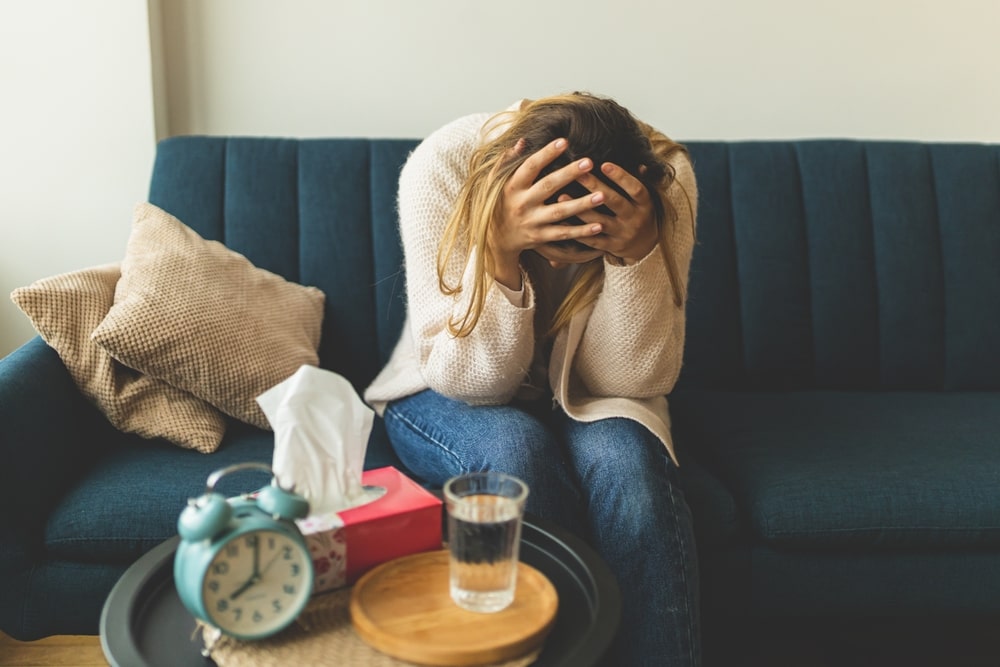The Cambridge Dictionary defines anxiety as “an uncomfortable feeling of nervousness or worry about something that is happening or might happen in the future.” According to the Mayo Clinic, experiencing worry, fear, stress, and anxiety is considered a normal part of life, when it is occasional and temporary. However, it is atypical for an individual to experience persistent and debilitating symptoms of anxiety and may indicate the presence of an anxiety disorder. There are several types of anxiety disorders listed in the Diagnostic and Statistical Manual of Mental Disorders, Fifth Edition (DSM-5). The National Alliance on Mental Illness (NAMI) asserts: “Anxiety disorders are a group of related conditions, each having unique symptoms… all [with] one thing in common: persistent, excessive fear or worry in situations that are not threatening.” An estimated 40 million people in the United States are affected by some type of anxiety disorder every year. Anxiety disorders are mental health conditions that require formal, individualized treatment.
The Role of Medication
There are a variety of approaches to treating people with anxiety disorders. The two main methods of treatment for anxiety disorders include psychotherapy and pharmacological intervention, and they are not mutually exclusive. Hence, medication can play a significant role in the treatment of anxiety disorders. There are different types of antidepressant medications used to treat anxiety, each with respective risks, benefits, and appropriate uses, some of which include the following, provided by the Mayo Clinic:
- Selective serotonin reuptake inhibitors (SSRIs): Work by slowing the re-absorption of serotonin (the neurotransmitter known to help with mood regulation and anxiety) in one’s the brain. Common examples of SSRIs include:
- Selective norepinephrine reuptake inhibitors (SNRIs): Work by reducing the reabsorption of neurotransmitters serotonin and norepinephrine in one’s brain. Common examples of SNRIs that are used treat anxiety include:
- Benzodiazepines: A type of sedative that alleviate muscle tension and can reduce some of the physical symptoms of anxiety. They work by interacting with the neurons in one’s brain to suppress and calm down electrical excitement. As a fast-acting medication, benzodiazepines are often prescribed to help manage symptoms associated with short-term anxiety. Common examples of benzodiazepines that are used to treat anxiety include:
- Tricyclic antidepressants (TCAs): TCAs affect three brain chemicals: serotonin, norepinephrine, and dopamine. They are prescribed less frequently as they are an older class of antidepressants that can cause more side effects than other options. Some examples of TCAs include:
- Monoamine oxidase inhibitors (MAOIs): MAOIs block the actions of monoamine oxidase enzymes (which are responsible for breaking down neurotransmitters such as dopamine, norepinephrine, and serotonin) in the brain. These drugs were the first type of antidepressants developed and are typically used as a last resort as an off-label treatment for panic disorder or social phobia.
The Food and Drug Administration (FDA) require antidepressant medications to clearly display a black box warning indicating the possibility of increased suicidal thoughts and behaviors when taken by some individuals under the age of 25. As is true with taking any type of medication there are associated risks. The specific risks will vary from person to person, as they will depend on several contributing factors (e.g., the individual’s health history, the presence of any additional mental health ailments, substance abuse issues, genetics, etc.). Nevertheless, medication can be a valuable tool in managing anxiety disorders, particularly when combined with therapy and other supportive strategies.
Treatment In Calabasas
Calabasas is a city in California. It is a well-known suburb of Los Angeles, located west of the San Fernando Valley and north of the Santa Monica Mountains. Over the past decade, the city of Calabasas has grown in its reputation for luxury as well as for privacy which makes it a hidden gem for residential living for society’s elite, and one of the most desirable destinations in Los Angeles County. It is also home to a plethora of highly qualified mental health clinicians providing an array of therapeutic services and treatment options.
The information above is provided for the use of informational purposes only. The above content is not to be substituted for professional advice, diagnosis, or treatment, as in no way is it intended as an attempt to practice medicine, give specific medical advice, including, without limitation, advice concerning the topic of mental health. As such, please do not use any material provided above to disregard professional advice or delay seeking treatment.


